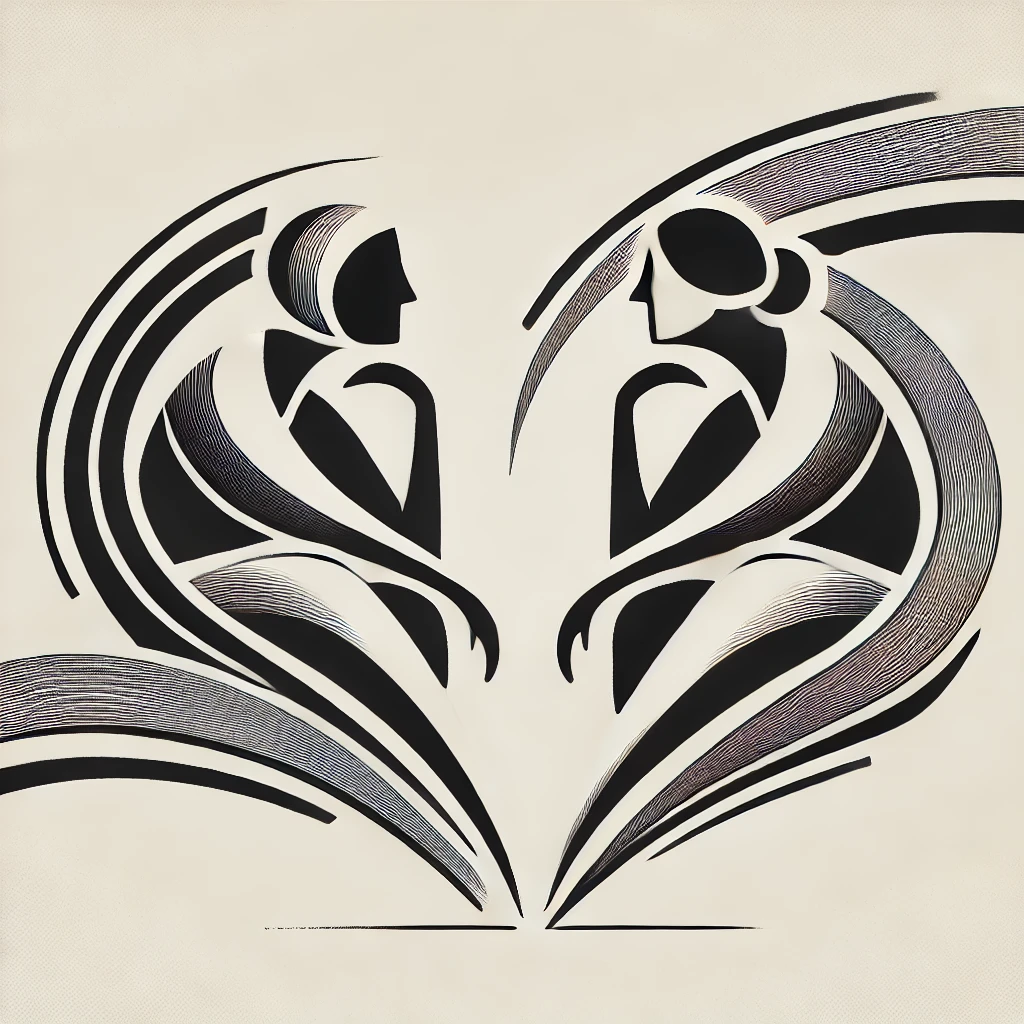Learning Irish is not just about vocabulary; it’s about building confidence to hold real conversations. For beginners, starting with mini-conversations—short, practical exchanges—makes the language accessible and immediately useful. I will never forget my woeful attempts at ordering food in Paris using my Norn Irish French, but it’s only through such experiences that we grow – even if it is hilariously painful. These building blocks help learners navigate daily interactions while connecting to the culture and rhythms of Irish speech. In this post, we’ll explore essential conversational phrases, break them down for easy understanding, and uncover their historical roots.
Building Conversations in Irish – Essential Phrases
Starting a Conversation
Every conversation begins with a greeting – or at least should do. You already know Dia duit (JEE-uh ghwitch, “Hello”), but what comes next? Here’s how to keep the dialogue flowing:

- How are you? – Conas atá tú? (KUN-uhs uh-TAW too)
- Conas means “how,” and atá is a form of the verb “to be.”
A simple response:
- I’m well, thank you. – Tá mé go maith, go raibh maith agat. (TAW may guh mah, guh rev mah ah-gut)
Introducing Yourself
To introduce yourself, use:
- My name is… – Is mise [your name]. (Iss MISH-uh [name])
- Is mise translates directly as “I am,” with a subtle emphasis on identity.
A follow-up might be:
- Where are you from? – Cá as tú? (Kaw ahs too)
- Cá means “where,” and as indicates origin.
- I am from… – Is as [place] mé. (Iss ahs [place] may)
Common Conversation Starters
Once introductions are out of the way, these phrases help keep the chat going:
- What do you do? – Cén post atá agat? (KANE post uh-TAW ah-gut)
- Post means “job,” and agat indicates possession.
- I work as a teacher. – Táim ag obair mar mhúinteoir. (TAW-im egg UB-ir mar WOOHN-choor)
For more casual topics:
- Do you like music? – An maith leat ceol? (On mah lyat KYOL?)
- An maith leat means “Do you like,” while ceol means “music.”
Polite and Useful Phrases
In any conversation, politeness goes a long way. Here are a few essentials:
- Please. – Le do thoil. (Leh duh hull)
- Thank you. – Go raibh maith agat. (Guh rev mah ah-gut)
- Excuse me. – Gabh mo leithscéal. (Gow muh lesh-KAYL)
If you need to clarify something:
- Can you repeat that? – An féidir leat é a rá arís? (On FAY-der lyat ay uh raw ah-REE-sh?)
- I don’t understand. – Ní thuigim. (Nee HIG-im)
Ending a Conversation
Finally, knowing how to close a conversation is just as important:
- Goodbye. – Slán. (Slawn)
- See you soon. – Feicfidh mé thú ar ball. (FEH-khee may hoo er BOWL)
The phrase ar ball (later) has its roots in colloquial Irish and emphasizes informality.
The Role of Dialogue in Ancient Irish Texts
In early Irish literature, dialogue often serves as a vehicle for storytelling, revealing character, and advancing narrative. A prime example comes from The Táin Bó Cúailnge, where exchanges between key figures illustrate both power dynamics and cultural norms.

One striking example is the interaction between Queen Medb and the prophetess Feidelm, which showcases the oral tradition, repetitive phrasing, and poetic cadence central to ancient Irish storytelling.
Medb’s direct and authoritative tone reflects her status as a queen, while Feidelm’s cryptic and repetitive responses emphasize the importance of prophecy and its role in shaping events. This exchange begins with Medb’s inquiry into Feidelm’s identity and her prophetic abilities:
“‘What is your name?’ asked Medb of the maiden.
‘I am Feidelm, the poetess of Connacht,’ said the maiden.
‘Whence do you come?’ asked Medb.
‘From Albion after learning the art of divination,’ answered the maiden.”
The conversation flows with a formal, question-and-answer structure. Feidelm’s repeated prophecy—“I see it bloody, I see it red”—not only underscores the inevitability of fate but also highlights a linguistic feature that persists in modern Irish: repetition for emphasis.
Ancient dialogues often used repetition, alliteration, and rhythmic patterns, hallmarks of an oral tradition meant to aid memorization and enhance engagement. These features resonate in modern Irish, particularly in poetry, proverbs, and storytelling. For instance, phrases like “Bíonn dhá thaobh ar gach scéal” (There are two sides to every story) echo the balanced structure of ancient dialogue.
Today’s Irish language retains these rhythmic and repetitive qualities, seen in conversation, literature, and even traditional music. The structure of question-and-answer remains a common teaching tool in language learning, reflecting the conversational dynamics of ancient texts like Táin Bó Cúailnge.
By examining dialogues like Medb and Feidelm’s, learners can not only improve their grasp of the language but also connect with Ireland’s rich linguistic heritage. The formal yet expressive nature of ancient exchanges reminds us that dialogue in Irish has always been more than communication.
Conclusion
Mastering mini-conversations in Irish is a gateway to meaningful engagement with the language and culture. From greetings to farewells, these phrases build the confidence needed to navigate daily interactions and explore Irish’s rich conversational traditions. Whether you’re introducing yourself with Is mise [name] or politely asking An féidir leat é a rá arís?, each phrase gets you one step closer to understanding the language.
To find out more about my writing journey, please click here or to contact me, see here.
Disclaimer: This post was written with the support of an AI assistant.

Leave a Reply
You must be logged in to post a comment.